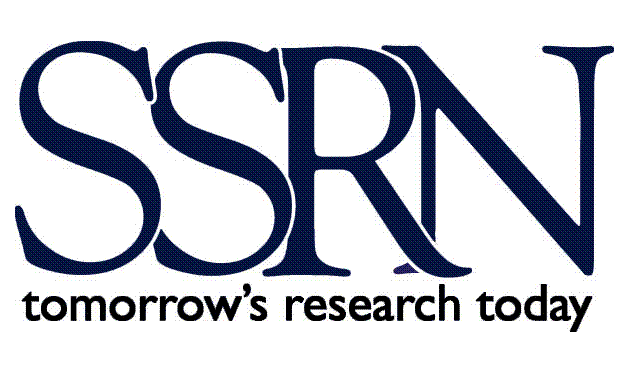Sustainability in Business and Agriculture
Sustainability is more than just a buzzword that businesses have latched onto for marketing appeal. Research across industries has consistently shown that a solid sustainability strategy can create value for a company’s stakeholders, help manage supply chain risk, improve employee and customer retention, and ultimately increase a company’s financial performance. In most cases, climate change is the driving force behind the concern for sustainability. In CDP’s most recent Supply Chain Report, 76 percent of the suppliers claimed that they have identified “inherent climate change risks” that could impact their profits or operations and 52 percent of suppliers have integrated climate change concerns into their business because of this (CDP, 2018). The strategic reasons to incorporate sustainability into traditional business models are clear and compelling. Business strategy aside, integrating sustainable practices can also be justified at the most basic level by the original United Nations call for sustainable development in the 1987 Brundtland Report: as a way of meeting the “needs of the present without compromising the ability of future generations to meet their own needs” (UN WCED, 1987).
While consideration of sustainability in supply chains is the first move in the right direction, proper sustainability assessment is the second, more crucial step towards business and global prosperity for years to come. The familiar ideology “what gets measured, gets managed” is just as true for sustainability as it is for the business applications for which the phrase was originally intended. Companies need quantitative assessment of sustainability to inform responsible decisions going forward, but also as a way to provide supportive evidence of any sustainably-focused mission statements they make. With increased focus on sustainability in recent decades has come an increased pull for accountability from businesses. A company needs to “know internally” that they are acting in such a way that is responsible and sustainable, but needs to be transparent and “show externally” that this is the case as well.
Internal accountability and consumer scrutiny are two of the major motivations behind the creation of sustainability reporting and certification programs. However, the choice of exactly which issues to report on and which metrics are the best indicators of these issues is a source of confusion for companies across sectors. The difficulty of deciding which metrics to use, when to use them, and how to measure them poses a challenge for green supply chain management. Further complicating the discussion is the fact that it is often not just one group of stakeholders who need to reach this agreement. Actors throughout the supply chain must negotiate which metrics to report using which data.
Global agricultural value chains are particularly complex, which makes sustainability assessment even more challenging. The value chains of agricultural commodities are typically characterized by low-value end products, expansive and nonlinear networks of actors, strong social and economic drivers on the producer and consumer ends, and wide variability due to environment and climate (Higgins et al., 2010). The complexity of the geographic and key actor networks of agricultural sustainability also increases the risk that the issues and indicators prioritized in sustainability assessment do not take into consideration multiple stakeholder perspectives. Sustainability issues considered important by executives of large agribusiness corporations or owners of agricultural product small businesses may differ from those considered important by farmers in developing countries.
Agriculture’s vulnerability to climate change is another reason why sustainability is so important in the industry, yet so difficult to define and assess. In the agricultural raw materials, beverage, and food sectors, climate change poses a threat by altering growing conditions, increasing pests and disease, and decreasing crop yields. A substantial portion of the supply chains of these sectors depend on natural resources and processes such as biodiversity, groundwater availability, air quality, and weather conditions. With this multitude of factors related to climate change and sustainability, it is easy to be overwhelmed when deciding which quantitative indicators of these factors to record and track.
Ultimately, businesses that rely on agricultural value chains attempt to choose a set of metrics that depict a story related to their product or make a compelling argument for their product’s sustainability or company’s sustainability as a whole.
Coffee Sector Context
Coffee is a prime example of a commodity crop that has a complex global value chain and is subject to the confusion surrounding sustainability efforts and measurement. Coffee beans are produced by the genus of plants Coffea, which includes anywhere from 25 to 100 species of coffee plants, specifically (NCA, n.d.). The two most common species in the commercial coffee industry are Arabica, which represents approximately 70 percent of the world’s coffee production, and Robusta, which accounts for roughly 30 percent of the global market (NCA, n.d.). Robusta is the heartier of the two species, as it prefers higher temperatures and is able to thrive at lower altitudes. Arabica, on the other hand, requires more specific growing conditions at higher altitudes and in rich soil, making it more difficult and expensive to cultivate (NCA, n.d.).
Coffee is grown worldwide in the equatorial zone located between 25 degrees North and 30 degrees South, an area also known as the “Bean Belt” (NCA, n.d.). This includes over 50 coffee producing countries around the world, according to the National Coffee Association of the U.S.A. (NCA, n.d.). The “Bean Belt” region can be seen in Figure 1, which depicts the major coffee exporting countries and members of the International Coffee Organization (ICO).
In 2018, over 168 million bags (60 kilograms, 132 pounds each) of coffee were produced by coffee exporting countries (ICO, 2019). The volume and geographic spread of coffee production is impressive, but the industry is also an economic powerhouse. According to Michigan Institute of Technology’s Observatory of Economic Complexity, the coffee industry represented $30.4 billion in exports as of 2017. Brazil, Vietnam, and Colombia were the top exporting countries of coffee in 2017 while the United States, Germany, and France were the top importing countries.
Despite the large volume of coffee traded worldwide, the price of coffee in the commodities market has suffered in recent years. In August of 2018, the international price of coffee, otherwise known as the C-price, dropped below $1 per pound for the first time in over a decade and has remained there ever since. While some industry actors say this is an urgent cause for concern, others are less worried, citing that the C-price is based on speculation and short-term projections which make it hard to accurately judge the state of the market.
The current state of the coffee industry has a lot to do with how the industry approaches sustainability today, but the complex network of entities in the coffee value chain is an inherent characteristic that motivated the industry’s interest in sustainability in the first place. Coffee is handled by a number of entities from “seed to cup”, and a single bag can have far-reaching effects even outside of its supply chain. It is important to acknowledge the various stakeholders involved and understand the details of their integrated roles before looking deeper into sustainability strategies for the industry.
Source:
Read more
Gerard, A., Lopez, M. C., & McCright, A. M. (2019). Coffee Roasters’ Sustainable Sourcing Decisions and Use of the Direct Trade Label. Sustainability, 11(19), 5437.
Elliott, K. A. (2018). What Are We Getting from Voluntary Sustainability Standards for Coffee. CGD Policy Paper. Washington, DC: Center for Global Development, 34.













Sustainability Measurement for Small-Scale Coffee Roasters
Sustainability in Business and Agriculture
Sustainability is more than just a buzzword that businesses have latched onto for marketing appeal. Research across industries has consistently shown that a solid sustainability strategy can create value for a company’s stakeholders, help manage supply chain risk, improve employee and customer retention, and ultimately increase a company’s financial performance. In most cases, climate change is the driving force behind the concern for sustainability. In CDP’s most recent Supply Chain Report, 76 percent of the suppliers claimed that they have identified “inherent climate change risks” that could impact their profits or operations and 52 percent of suppliers have integrated climate change concerns into their business because of this (CDP, 2018). The strategic reasons to incorporate sustainability into traditional business models are clear and compelling. Business strategy aside, integrating sustainable practices can also be justified at the most basic level by the original United Nations call for sustainable development in the 1987 Brundtland Report: as a way of meeting the “needs of the present without compromising the ability of future generations to meet their own needs” (UN WCED, 1987).
While consideration of sustainability in supply chains is the first move in the right direction, proper sustainability assessment is the second, more crucial step towards business and global prosperity for years to come. The familiar ideology “what gets measured, gets managed” is just as true for sustainability as it is for the business applications for which the phrase was originally intended. Companies need quantitative assessment of sustainability to inform responsible decisions going forward, but also as a way to provide supportive evidence of any sustainably-focused mission statements they make. With increased focus on sustainability in recent decades has come an increased pull for accountability from businesses. A company needs to “know internally” that they are acting in such a way that is responsible and sustainable, but needs to be transparent and “show externally” that this is the case as well.
Internal accountability and consumer scrutiny are two of the major motivations behind the creation of sustainability reporting and certification programs. However, the choice of exactly which issues to report on and which metrics are the best indicators of these issues is a source of confusion for companies across sectors. The difficulty of deciding which metrics to use, when to use them, and how to measure them poses a challenge for green supply chain management. Further complicating the discussion is the fact that it is often not just one group of stakeholders who need to reach this agreement. Actors throughout the supply chain must negotiate which metrics to report using which data.
Global agricultural value chains are particularly complex, which makes sustainability assessment even more challenging. The value chains of agricultural commodities are typically characterized by low-value end products, expansive and nonlinear networks of actors, strong social and economic drivers on the producer and consumer ends, and wide variability due to environment and climate (Higgins et al., 2010). The complexity of the geographic and key actor networks of agricultural sustainability also increases the risk that the issues and indicators prioritized in sustainability assessment do not take into consideration multiple stakeholder perspectives. Sustainability issues considered important by executives of large agribusiness corporations or owners of agricultural product small businesses may differ from those considered important by farmers in developing countries.
Agriculture’s vulnerability to climate change is another reason why sustainability is so important in the industry, yet so difficult to define and assess. In the agricultural raw materials, beverage, and food sectors, climate change poses a threat by altering growing conditions, increasing pests and disease, and decreasing crop yields. A substantial portion of the supply chains of these sectors depend on natural resources and processes such as biodiversity, groundwater availability, air quality, and weather conditions. With this multitude of factors related to climate change and sustainability, it is easy to be overwhelmed when deciding which quantitative indicators of these factors to record and track.
Ultimately, businesses that rely on agricultural value chains attempt to choose a set of metrics that depict a story related to their product or make a compelling argument for their product’s sustainability or company’s sustainability as a whole.
Coffee Sector Context
Coffee is a prime example of a commodity crop that has a complex global value chain and is subject to the confusion surrounding sustainability efforts and measurement. Coffee beans are produced by the genus of plants Coffea, which includes anywhere from 25 to 100 species of coffee plants, specifically (NCA, n.d.). The two most common species in the commercial coffee industry are Arabica, which represents approximately 70 percent of the world’s coffee production, and Robusta, which accounts for roughly 30 percent of the global market (NCA, n.d.). Robusta is the heartier of the two species, as it prefers higher temperatures and is able to thrive at lower altitudes. Arabica, on the other hand, requires more specific growing conditions at higher altitudes and in rich soil, making it more difficult and expensive to cultivate (NCA, n.d.).
Coffee is grown worldwide in the equatorial zone located between 25 degrees North and 30 degrees South, an area also known as the “Bean Belt” (NCA, n.d.). This includes over 50 coffee producing countries around the world, according to the National Coffee Association of the U.S.A. (NCA, n.d.). The “Bean Belt” region can be seen in Figure 1, which depicts the major coffee exporting countries and members of the International Coffee Organization (ICO).
In 2018, over 168 million bags (60 kilograms, 132 pounds each) of coffee were produced by coffee exporting countries (ICO, 2019). The volume and geographic spread of coffee production is impressive, but the industry is also an economic powerhouse. According to Michigan Institute of Technology’s Observatory of Economic Complexity, the coffee industry represented $30.4 billion in exports as of 2017. Brazil, Vietnam, and Colombia were the top exporting countries of coffee in 2017 while the United States, Germany, and France were the top importing countries.
Despite the large volume of coffee traded worldwide, the price of coffee in the commodities market has suffered in recent years. In August of 2018, the international price of coffee, otherwise known as the C-price, dropped below $1 per pound for the first time in over a decade and has remained there ever since. While some industry actors say this is an urgent cause for concern, others are less worried, citing that the C-price is based on speculation and short-term projections which make it hard to accurately judge the state of the market.
The current state of the coffee industry has a lot to do with how the industry approaches sustainability today, but the complex network of entities in the coffee value chain is an inherent characteristic that motivated the industry’s interest in sustainability in the first place. Coffee is handled by a number of entities from “seed to cup”, and a single bag can have far-reaching effects even outside of its supply chain. It is important to acknowledge the various stakeholders involved and understand the details of their integrated roles before looking deeper into sustainability strategies for the industry.
Source:
Read more
Gerard, A., Lopez, M. C., & McCright, A. M. (2019). Coffee Roasters’ Sustainable Sourcing Decisions and Use of the Direct Trade Label. Sustainability, 11(19), 5437.
Elliott, K. A. (2018). What Are We Getting from Voluntary Sustainability Standards for Coffee. CGD Policy Paper. Washington, DC: Center for Global Development, 34.
Share this: